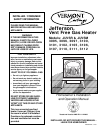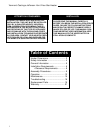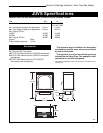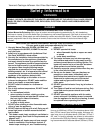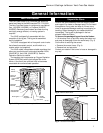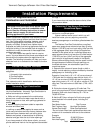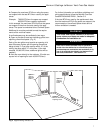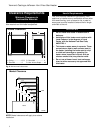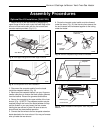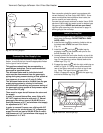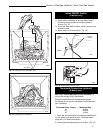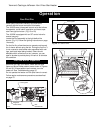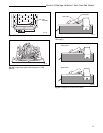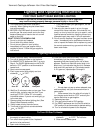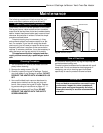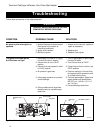
66
Vermont Castings Jefferson Vent Free Gas Heater
WARNING
This heater must have fresh air for proper opera-
tion. If it does not, poor fuel combustion could
result. Read the following instructions to ensure
proper fresh air supply for this and other fuel-
burning appliances in your home.
Modern construction standards have resulted in homes
that are highly energy-efficient and that allow little heat
loss. Your home needs to breathe, however, and all
fuel-burning appliances need fresh air to function
properly and safely. Exhaust fans, clothes dryers,
fireplaces and other fuel burning appliances use the air
inside the building. If the available fresh air supply is
insufficient to meet the demands of these appliances,
problems can result.
The JUVS heater has specific fresh air require-
ments. You must determine that these requirements will
be met within the space where the appliance will be
installed. The following information will help you insure
adequate fresh air is available for the heater to function
properly.
Provide for Adequate Ventilation
Any space within a home can be classified in these
categories:
1) Unusually tight construction
2) Confined space
3) Unconfined space
First, determine which classification defines the in-
tended installation space.
Unusually Tight Construction
You must provide additional fresh air if the space falls
into this classification.
Unusually Tight Construction
is
defined as construction wherein:
a. Walls and ceilings exposed to the outside atmo-
sphere have a continuous water vapor barrier with a
rating of one perm or less, with openings gasketed or
sealed,
and
b. weather stripping has been added on openable
windows and doors
and
c. caulking or sealants are applied to areas such as
joints around windows and door frames, between sole
plates and floors, between wall and ceiling joints,
between wall panels, at penetrations for plumbing,
electrical and gas lines and at all other openings.
If your home meets all of the above criteria, you must
provide additional fresh air for the appliance as detailed
Installation Requirements
Fresh Air Requirements for
Combustion and Ventilation
on Page 7.
If your home does not meet the above criteria, follow
the procedure below.
Determine If You Have a Confined or
Unconfined Space
Use the following formula to determine if you have a
confined or unconfined space.
Space
is defined as the room in which you will
install the heater, plus any adjoining rooms with
doorless passageways or ventilation grilles between the
rooms.
The National Fuel Gas Code defines a
confined
space
as a space whose volume is less than 50 cubic
feet per 1,000 BTU per hour input rating (4.8m
3
per Kw)
of the aggregate (total) input rating of all appliances
installed in that space and an
unconfined space
as a
space whose volume is not less than 50 cubic feet per
1,000 BTU per hour (4.8m
3
per Kw) of the aggregate
input rating of all appliances installed in that space.
Rooms communicating directly with the space in which
the appliances are installed, through openings not
furnished with doors, are considered a part of the
unconfined space.
1. Determine the volume of space (length x width x
height). Include adjoining rooms connected by doorless
passageways or ventilating grilles.
Example: A room that is 18’ x 12’ x 8’ has a volume of
1728 cubic feet. An adjoining open kitchen that is 10’ x
12’ x 8’ has a volume of 960 cubic feet. An adjoining
open dining room is 12’ x 12’ x 8’ with a volume of 1152
cubic feet. The total volume is 3840 feet. (1728 + 960 +
1152)
2. Divide the volume of space by 50 cubic feet. The
result is the maximum BTU/hour the space can support.
Example: 3840 cubic feet divided by 50 = 76.8 or
76,800 BTU/hour.
3. Add the BTU/hour ratings of all fuel-burning appli-
ances installed in the same space, including the
following:
Gas Water Heater Gas Furnace
Gas Fireplace Logs Vent-free Gas Heater
Vented Gas Heater* Other Gas Appliances*
*Do not include Direct-vent appliances as these use
outdoor air for combustion and vent to the outdoors.
Example:
Gas Range 55,000 BTU/hour
Vent-free Logset +25,000 BTU/hour
Total 80,000 BTU/hour



